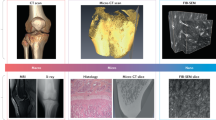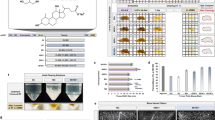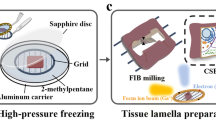Abstract
NOWADAYS a number of micro-methods (for example, X-ray and interference microscopy, and isotope techniques) are used for quantitative analyses of mineralized biological tissues. These methods have a resolution which allows analyses at or below the cellular scale. Difficulties in preparing the biological material have so far been a limiting factor in the application of the methods. An ideal specimen is a thin, plane parallel tissue section with a known thickness within the region 10–100µ. In order to prepare such sections, blocks are generally ground down to a desirable thickness, but all such methods so far used possess serious disadvantages: they do not allow a continuous control of the thickness during the grinding procedure, and wedge-shaped sections or fragments of sections are often obtained. These difficulties prompted us to seek a method for preparing ground sections based on lapping technique.
This is a preview of subscription content, access via your institution
Access options
Subscribe to this journal
Receive 51 print issues and online access
$199.00 per year
only $3.90 per issue
Buy this article
- Purchase on Springer Link
- Instant access to full article PDF
Prices may be subject to local taxes which are calculated during checkout
Similar content being viewed by others
References
Hallén, O., Acta Anatomica, Suppl. 25 (1955).
Author information
Authors and Affiliations
Rights and permissions
About this article
Cite this article
HALLÉN, O., RÖCKERT, H. A New Method for obtaining Thin Plane Parallel Sections of Mineralized Specimens. Nature 182, 1225–1226 (1958). https://doi.org/10.1038/1821225a0
Issue Date:
DOI: https://doi.org/10.1038/1821225a0
This article is cited by
-
Skeletal lesions following ingestion of fluoridated water
Experientia (1960)
Comments
By submitting a comment you agree to abide by our Terms and Community Guidelines. If you find something abusive or that does not comply with our terms or guidelines please flag it as inappropriate.



